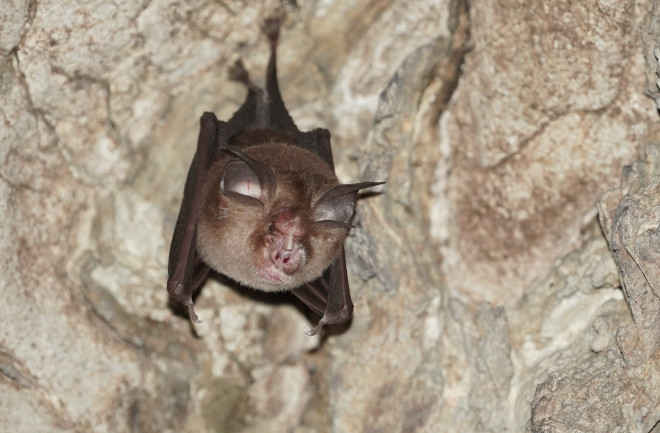Bumblebee bats – aka Kitti’s hog-nosed bats, named after discoverer Kitti Thonglongya – are among the rarest bats in the world, and certifiably the smallest mammals, according to Guinness World Records.
They cluster around a few caves in Thailand and Myanmar, most notably those along the Khwae Noi River.
Here are five facts about the world's smallest mammal.
1. How Big Is the Smallest Mammal in the World?
The delicate flyers measure up to 1.3 inches from head to backside, and they weigh about as much as a dime. The bumblebee bat has a body weight of up to 2 grams, which is to say it has the heft of a bottle cap, business card, plastic spoon or paperclip.
Read More: Bat Faces Are Vast and Varied
2. What Do Bumblebee Bats Eat?
Like other bats, the bumblebee species sports a tiny thumb and a full set of teeth, which in their case, numbers 28. They feed along the tops of bamboo and teak forests, hunting for flies and other small insects. Given their small size and numbers, they don’t have a major impact on insects, which they scoop up while flying or from leaves and other surfaces.
And they don’t just eat flies. A dissection of a bumblebee bat’s stomach, after it had fed, revealed a menagerie of different bug parts. Including spider legs and fragments of beetles.
3. Where Do Bumblebee Bats Live?
They are homebodies. Bumblebee bats live in domed limestone caves with multiple chambers well suited to their roosting, and they stick close to home.
They leave at dawn each morning for about 18 minutes, to feed, and they leave again at dusk for about 30 minutes. Much of the intervening time is spent in torpor, a metabolically slowed-down state that saves energy.
Read More: Scientists Identify Long-Term Memory in Wild Bats
4. Are They Attentive Mothers?
Bumblebee bat mothers raise just one pup each year, and they do so very carefully. After the tiny pup is born, it hangs onto its mother and nurses from her mammary glands until the baby has grown large and strong enough to fly and hunt for its own food.
During this rearing period, the mother will roost in a special nursery cave to devote full attention to the pup. At first, it remains attached to the mother while she feeds, but later, once the pup has grown, it stays behind at the roost.
5. Are Bumblebee Bats Endangered?
The bumblebee bat lives in just two small areas in Thailand and Myanmar, where tourism and farming threaten its natural habitat. Its short range and preference for bamboo forests and large limestone caves give it few other options.
In 2018, the International Union for Conservation of Nature and Natural Resources rated the species as fragmented and declining yet only near-threatened, not vulnerable.
Between 1997 and 2008, scientists from Europe and Thailand surveyed caves in Thailand and Myanmar and found the bat in 44 of the former and 5 of the latter. They estimated the total population at 10,257 bumblebee bats.
Read More: Protecting the Coolest Types of Bats in North America

